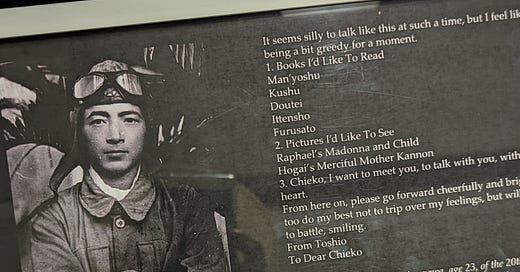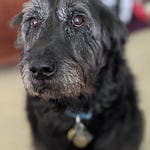Monday, August 1st, my family and I spent the day at the Pearl Harbour National Memorial in Honolulu. We were four days into a long-planned and COVID-postponed trip to Hawaii. A “last” vacation before our three boys began leaving for college.
I believe everyone should make the voyage to Pearl Harbor. It’s a humbling place. For our family, however, it’s also personal.
My mom was a Navy kid living in military housing on Pearl Harbor with her mother and four elementary-age siblings on December 7, 1941. Grandfather was a Naval officer on the USS Chicago, a cruiser, and one of the few ships in the US fleet not in the harbor the morning the Japanese attacked. Bombs leveled their neighbors’ houses on both sides. When the planes retreated, my aunts and uncles stood on the beach and watched the battleship Utah burn. The smell of oil fire triggers Mom’s sensory memories eighty years later.
Mom has many stories, and I’ll share them someday. They’re miraculous and horrific and woven through our family lore. I’m also privileged to have been able to bring my kids there (even though, admittedly, their eyes glaze hearing me repeat those stories, just like mine did when at their age).
What I didn’t expect during our day at the memorial was the walk through a special exhibit on the USS Missouri, now permanently docked at Pearl Harbor. The battleship, commissioned after the Japanese attack, became a part of the WWII US fleet in 1944. On April 11, 1945, she was struck by a kamikaze plane during the Battle of Okinawa. Mercifully, only the bomber’s wing grazed the ship’s deck. The plane and its pilot were destroyed, but the Missouri suffered little damage.
Today, the USS Missouri Memorial Association, in partnership with the Chiran Peace Museum in Japan, hosts an exhibit onboard the battleship called, “Divine Wind: Kamikaze and the Battle for the Pacific.” Visitors explore the origins, history, and artifacts of the kamikaze.
I was mesmerized. I’d known so little about the kamikaze, characters in a black and white movie. Their flight caps and ID tags made them suddenly real. One pilot’s white scarf. Another’s pocket-size good luck charm.
And then there were the final letters. Each kamikaze was provided the opportunity to write to their families and loved ones before taking off on their mission. What do you say to your mother, wife, child on your way to near-certain death? Most of the letters on display on the Missouri are translated reproductions. But there are originals, fading ink-and-brush script on torn slips of paper that bear the folded creases of decades.
“We’ve spent busy days moving from place to place,” wrote second Lieutenant Toshio Anazawa, age 23. “And now the magnificent day of my attack sortie has arrived. I have so much I want to say to you. And yet I know that all of them amount to nothing other than words of gratitude for your depth of the love you have shown me.”
I read on, a voyeur across the lifetimes.
“It seems silly to talk like this at such a time,” Anazawa wrote, “but I feel like being a bit greedy for a moment.”
Then, his list of the things he’d like to have witnessed before dying.
Books I’d Like to Read
Man’yoshu
Kushu
Doutei
Ittensho
Furusato
Pictures I’d Like to See
Raphael’s Madonna and Child
Hogai’s Merciful Mother Kannon
I grabbed my husband’s arm. “Did you see that? A kamikaze’s last letter before dying and he listed the books he wished he’d read!”
My husband tried to be enthusiastic. But the crowd was pushing. We were hungry. The boys were getting ahead of us.
I, however, want to remember. I snapped this photo. It was the best I could manage, even in a moment when the stakes were so low in comparison.














Share this post